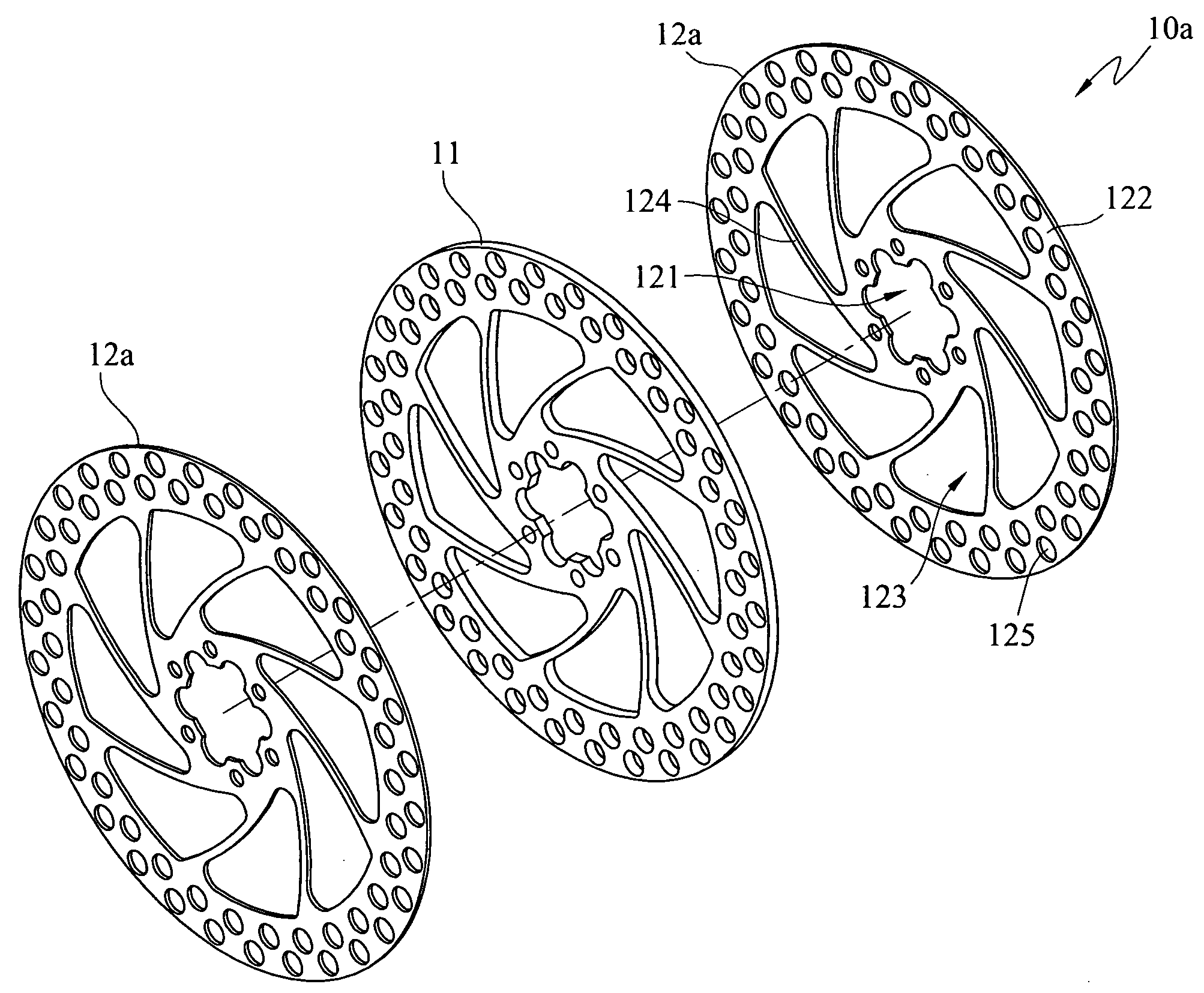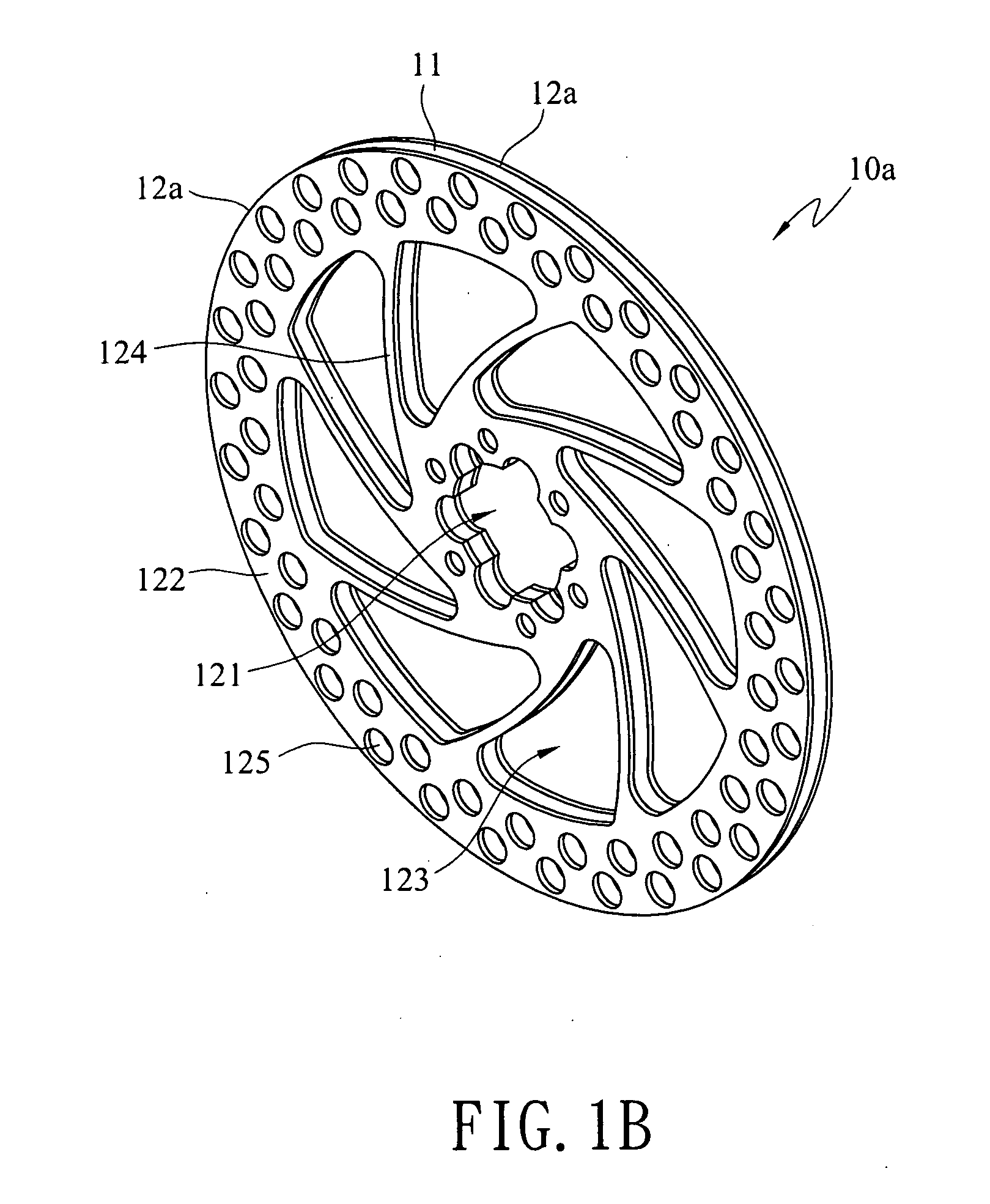Brake disc structure with composite materials
a technology of composite materials and brake discs, applied in the direction of brake discs, braking elements, actuators, etc., can solve the problems of high manufacturing cost, increased cost, and high material cost, and achieve the effect of low manufacturing cos
- Summary
- Abstract
- Description
- Claims
- Application Information
AI Technical Summary
Benefits of technology
Problems solved by technology
Method used
Image
Examples
Embodiment Construction
[0023]FIGS. 1A and 1B show a first preferred embodiment of a brake disc structure with composite materials according to the present invention. The brake disc structure with composite materials 10a includes an inner disk 11 and at least two outer disks 12a. The inner disk 11 is disc-shaped and made of a light metal material, wherein the light metal material has a specific gravity less than 4 g / cm3 and is a material such as aluminum alloy or titanium alloy. The outer disks 12a are respectively stacked on an upper surface and a lower surface of the inner disk 11 and combined with the upper and lower surfaces of the inner disk 11 through a metallurgical reaction process. The above outer disks 12a are disc-shaped and made of a ferrous metal material, wherein the ferrous metal material is a cast iron material or a stainless steel material. An axle hole 121 is opened in the center of the outer disk 12a for being fitted on a hub and penetrates the inner disk 11, thereby constituting the bra...
PUM
 Login to View More
Login to View More Abstract
Description
Claims
Application Information
 Login to View More
Login to View More - R&D
- Intellectual Property
- Life Sciences
- Materials
- Tech Scout
- Unparalleled Data Quality
- Higher Quality Content
- 60% Fewer Hallucinations
Browse by: Latest US Patents, China's latest patents, Technical Efficacy Thesaurus, Application Domain, Technology Topic, Popular Technical Reports.
© 2025 PatSnap. All rights reserved.Legal|Privacy policy|Modern Slavery Act Transparency Statement|Sitemap|About US| Contact US: help@patsnap.com



